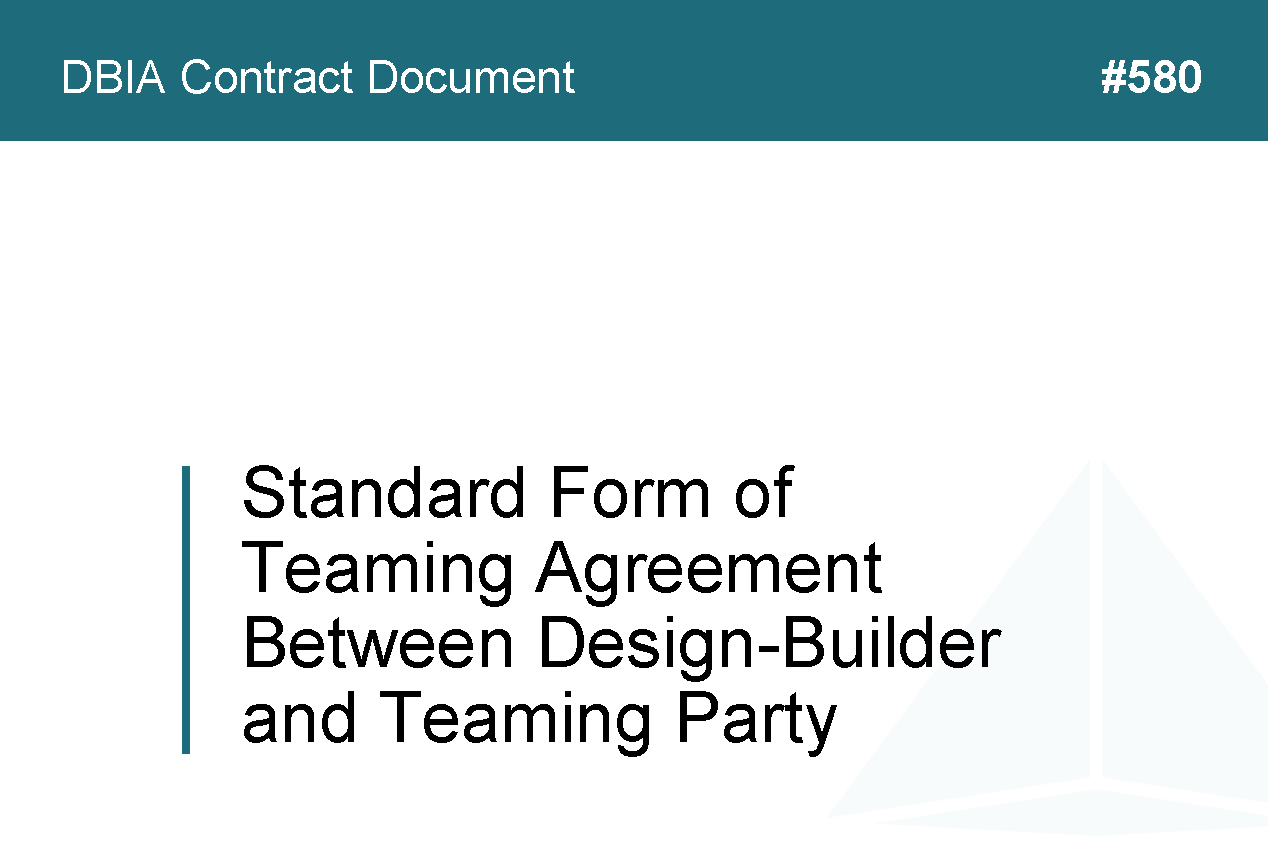
Managing Principal, Walter P Moore
Chair, DBIA’s Teaming Agreements Subcommittee
“Effective Teaming Agreements are a foundation of design-build success,” says Rachel John, Esq., Assoc. DBIA, Senior Associate at Zetlin and De Chiara, LLP, a New York City-based law firm specializing in construction law. John is also a member of a DBIA-sponsored committee of diverse professionals with extensive design-build project experience – as design-builders, designers, contractors and owners, among other roles.
Committee members have shared their individual experiences to identify where projects go right – or wrong. One practice common to successful projects is a fair and comprehensive Teaming Agreement between the design-builder and the lead AE firm.
John explains, “A Teaming Agreement codifies the parties’ obligations and expectations during the pursuit phase, and it is crucial.“
“The seeds of project success are sown during the teaming stage,” advises Sean Gellhaus, PE, DBIA, one of three national design-build contracting managers for engineering firm HNTB. “Too often, the entire team is so eager to respond to the RFP that they skip over the Teaming Agreement discussion or use a standard perfunctory agreement that just amounts to a marketing commitment. This can set the project team on a path to misunderstandings, unmet expectations and problems.”
The Teaming Agreement helps glue the entire team together early. Holly Stone, president of a 16-person secure engineering firm, agrees, “As a specialty consultant, I need to understand where my firm fits in and what is expected so I can best support the team. Too often, we are left in the dark until long after the project is won.”
What do design-builders say? Rob Barbera, SVP of Turner Construction’s Engineering Group in New York City, explains that for the design-builder, a Teaming Agreement can be a powerful tool for planning and confirming mutual commitments. “The design-builder and the AE need to be on the same page from day one of the pursuit. Commitments must be realistic and explicit, so the effort to hammer out a solid Teaming Agreement pays off downstream. For example, the parties should discuss their pursuit of deal-breakers and agree on teaming ‘off-ramps.’ Some deals may not make sense, and it is better to know early.”
So where does a design-builder start the teaming process? Many begin with a generic format drafted by their internal counsel and simply add basic information about the project without delving into any detail. DBIA’s committee recommends a more robust approach, even though it takes a bit more effort.
“DBIA 580, the organization’s Teaming Agreement template, is a solid place to start, but not enough firms have adopted it,” says Walter P Moore’s Lee Slade, who is chairing DBIA’s subcommittee digging further into the topic. “Regardless of form, the Teaming Agreement must address key elements, including basics such as the scope of services for each team member, deliverables and pre-award compensation, as well as more complex issues such as teaming off-ramps, indemnity and insurance requirements, and use of preliminary design deliverables.
Many project details are unknown at the teaming stage, so it may not be practical to fully negotiate the follow-on AE design agreement with the Teaming Agreement. At a minimum, the committee recommends that the parties include a “Term Sheet” as an attachment to the Teaming Agreement, which captures the agreements in principle on the parties’ priority commercial terms for use in later negotiation of the full follow-on agreement once a contract award is made.
DBIA fosters successful design-build projects through better teamwork among design-builders, design professionals and other project team members. Learn more about teaming best practices in our DBIA Best Practices documents, available as free downloads.

